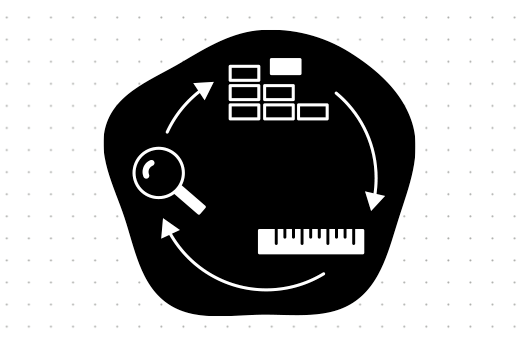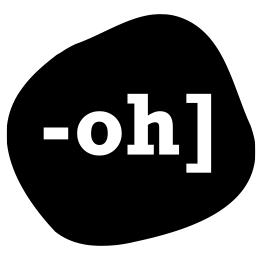Filter by category
If there’s one thing we’ve learned in a decade of custom software development, it’s that start-ups and early-stage businesses operate in a context of extreme uncertainty. Contrary to what most entrepreneurs believe, turning a vision into a successful business model takes more than just a brilliant idea and the budget to implement it. Most of the time, it is actually all about execution—it takes a good action plan and a lot of perseverance.
Over the years, we’ve crossed paths with several great business ideas. Some have grown into huge industry disruptors, while others have failed to grow beyond their early stages. Is luck to blame? As data-driven people, we refuse to believe so. In fact, one of our core strengths as a software development company is making sure that our clients’ ideas always fall under the “successful ideas” category.
We achieve this by asking the hard questions first. By doing so, we ensure our clients don’t overbuild or underbuild. But, how do we find the right balance? In short, we test certain key assumptions together and then decide if they should pivot or persevere.
Five Takeaways to Help You Apply The Lean Methodology to Your Business
The Lean Methodology is a set of practices designed to increase the odds of building a successful startup or business model. How? According to Eric Ries, an American entrepreneur, product strategy advisor, and best-selling author, we need to focus on measuring progress, setting up milestones, and prioritizing work in order to improve entrepreneurial outcomes.
In his book, The Lean Startup, Eric Ries, provides a detailed guide on how to strategically navigate each stage of furthering a business idea to guarantee a lucrative outcome. We want your product to succeed, so we’ve compiled the main takeaways for you.
Takeaway no. 1 - Make Validated Learning a Priority

“Startups do not exist just to make stuff, make money, or serve customers. They exist to learn how to build a sustainable business. This learning can be validated by running frequent experiments that allow you to test each element of your vision.”
In the age of data, if there’s one thing that can validate or invalidate your vision or business idea, it is metrics. This is why measuring progress as you go is key, and creating a method to track progress can provide you with clarity to some essential business questions, such as:
Whether and when to invest in the process;
How to formulate, plan, and build the infrastructure;
When to partner;
When to respond to feedback or stick with the vision;
When and how to invest in scaling the business.
If you are able to confidently respond to the questions listed above, you have successfully implemented validated learning. In essence, validated learning is the process of demonstrating empirically that a team has discovered valuable truths about the business’s present and future. It’s more accurate, concrete, and faster than business planning or market forecasting. But, in order to learn, you first need to build.
Takeaway no. 2 - Start with an MVP

“Productivity in business is not how much you are building, but how much validated learning you are getting from the team’s efforts.”
Some of the most frequent questions we get are, “Can this software product be built?” Followed by “How fast?” and then “What’s the estimated budget we need?” These questions can be answered relatively easily, but instead, we advise our clients to ask themselves, “Should this product be built?” or “Can a sustainable business model be built around this product?” Remember we warned you that we were experts in asking the hard questions? We weren’t kidding.
As much as we’d love to have the right answer at hand immediately, the only way to learn is by experimenting. And, yes, there is a smart way to experiment— by having a clear picture of your value-creating efforts versus waste. This translates to building a minimum viable product (MVP). An MVP is a straightforward solution to measuring how customers will react to your product and then seeing if your vision is aligned with their needs.
Not only can the MVP establish baseline behavior in a far more accurate way than market research ever could, but also, the data you will get will influence both the importance and sequence of future features. When building your own MVP, follow this simple rule: remove any features, processes, or efforts that do not contribute to the learning that you seek. Simply put, less is more.
Takeaway no. 3 - Work Towards Building a Capital-Efficient Company

“Markets change all the time, and our job is to change with them. If numbers from early experiments don’t look promising, there is clearly a problem with the strategy. That doesn’t mean it’s time to give up, but to get some immediate qualitative feedback about how to improve the product.”
Let’s assume that you’ve already defined who your customer is, and what he or she finds valuable. Additionally, you're already noticing positive improvements in metrics through the empirical data collected from real customers. If this is your case, congratulations are due; it’s a great sign that you’re on the right track! But, is your product strategy aligned with your customers’ needs?
If the answer is yes, there’s still room to keep searching for positive changes in metrics to check the validity of your feedback. If the answer is no, don’t get discouraged; instead, follow the numbers and change your strategy in order to make genuine progress.
The key is not to obsess over data and metrics, but rather to focus your efforts on minimizing total time spent by using the Build-Measure-Learn feedback loop. The MVP will help in the process by investing the minimum amount of effort with the least amount of development time. Its goal is to measure the impact of your business idea, not by having a perfect initial product, but rather by removing features that may not prove essential later on. It’s your best and most important shot at building a capital-efficient company.
Takeaway no. 4 - Build an Innovation Accounting Framework

“The earliest strategic plans are often intuition guided. To translate these instincts into data, entrepreneurs must get out of the building and start learning.”
What differentiates the success stories from the failures? It’s discovering which part of the plan works brilliantly, which part is misguided and then adapting your strategy accordingly. In other words, this requires understanding if a new product is value-creating or value-destroying. Moreover, a lack of data stems from every new product idea which prevents you from making an informed guess about what the business model should look like. This is why every product roadmap needs a new kind of process explicitly geared to disruptive innovation. It’s what Eric Ries calls innovation accounting, and, yes, you can build a framework for it.
Innovation accounting is an indicator of whether your idea is making progress or not. It can help you answer questions like, “How do you know that the changes you are making will drive the results you are seeking?” Or,“How do you know you are drawing the right lessons from those changes?”
However, beware of vanity metrics, such as gross number of customers and so on. They can mislead you. Instead focus on the metrics that can serve as learning milestones, or what Ries calls actionable metrics, such as “How do customers interact with your products?” The innovation accounting framework makes it clear to see when the company is stuck and needs to change direction, and the answers you seek are laying behind customer behavior patterns, also known as flows.
Takeaway no. 5 - Optimize Your Product Based on Key Learning. Pivot if necessary.

“If you are building the wrong thing, optimizing the product of its marketing will not yield significant results. A startup has to measure progress against a high bar: evidence that a sustainable business can be built around its products or services. That’s a standard that can be assessed only if the startup has made clear, tangible predictions ahead of time.”
We’ve established that the first step in building an innovation accounting framework is using an MVP to collect real data in order to obtain a clear picture of your current status. The next step is to fine-tune your product from your baseline towards the ideal. After several attempts to optimize your product (yes, it will take several!), you will eventually learn if you should pivot or persevere.
What key learnings to look for? They differ, of course, from business to business. But some valuable questions to ask and use as the baseline for your innovation accounting framework are:
#1 — Do consumers recognize that they have the problem you are trying to solve?
#2 — If there was a solution, would they buy it?
#3 — Would they buy it from us?
#4 — Can we build a solution for that problem?
Keep an open mind even if the answers you get contradict your initial assumptions. Remember that your goal is to build a capital-efficient company, whatever it takes.
Conclusion - Stay Lean
The one conclusion to everything above is that magic can happen if you measure progress, even in the context of extreme uncertainty. And, by magic, we mean increasing the odds of building a successful business model. No amount of market research, planning, and design can anticipate the many complexities of bringing a product to life in the real world. Remember:

If too much analysis is problematic, and none can lead to failure, how do you know when to stop analyzing and start building? The answer is the MVP. The first step in the process is to confirm that the customer has a significant problem worth solving.
Until next time, we're here to help you put your assumptions to the test so you can build, learn, and follow through with your goals. Wishing you validated assumptions, and happy customers.





